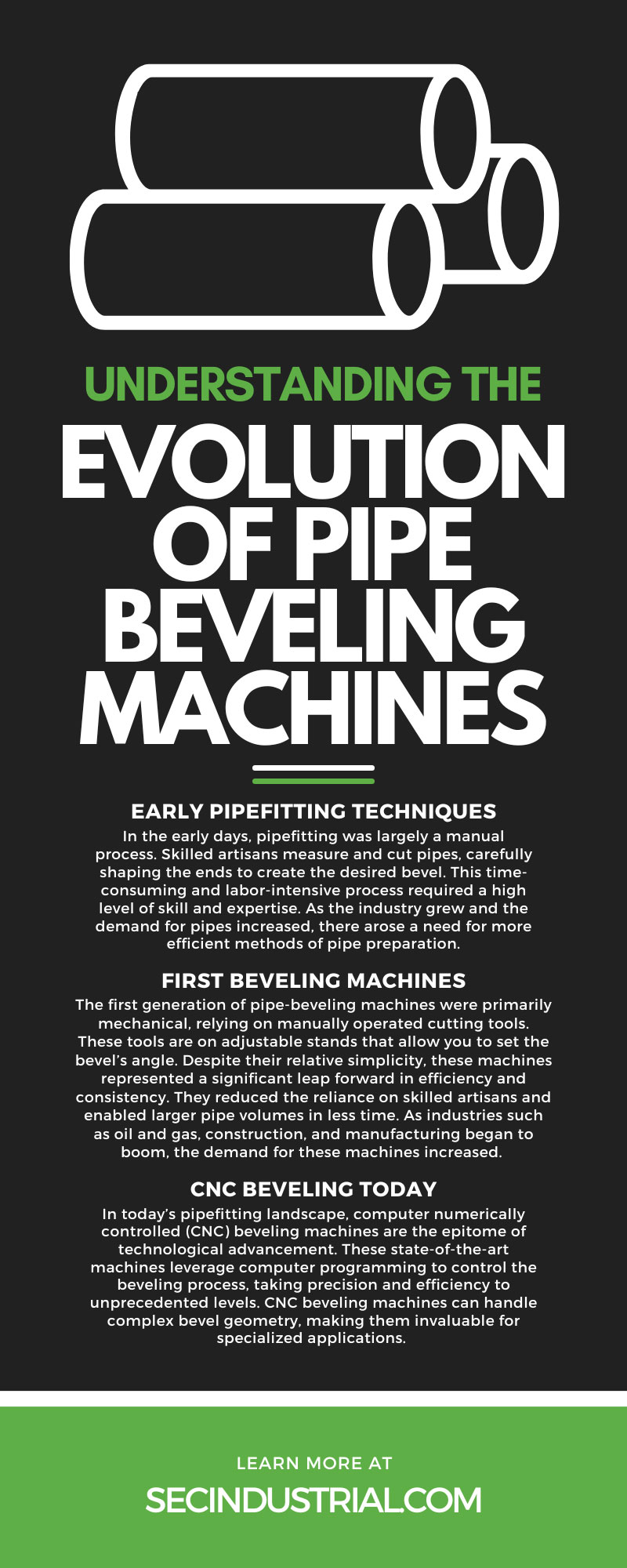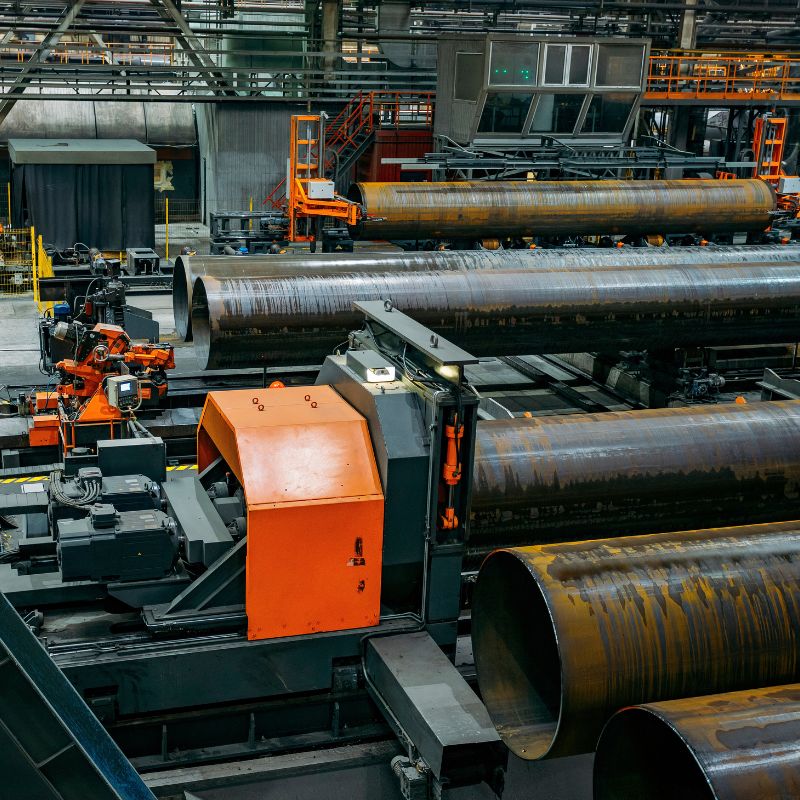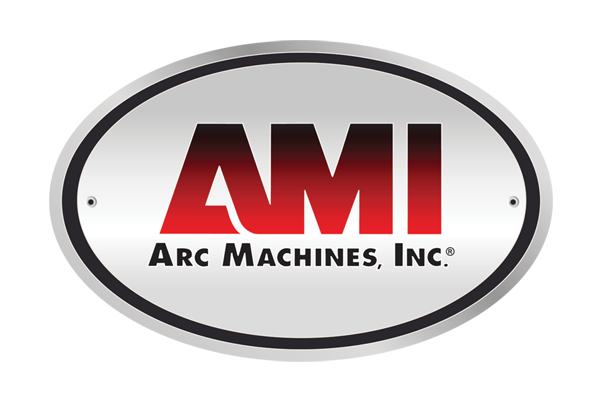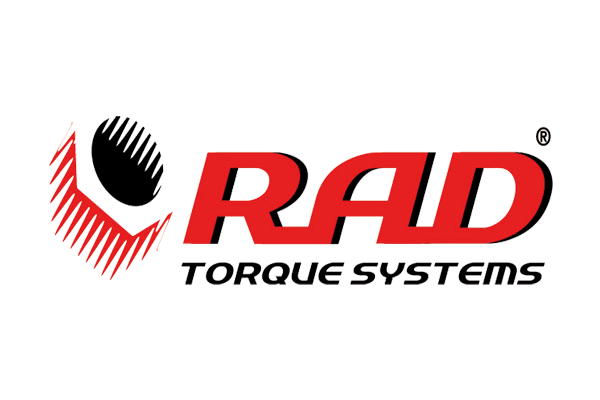Understanding the Evolution of Pipe Beveling Machines
Pipe beveling machines have undergone a significant evolution since their inception, mirroring the advancements in technology and the growing needs of the industry. These machines, which are integral for preparing pipe ends for welding and other processes, have transitioned from rudimentary manual devices to sophisticated, automated systems.
Let’s learn the evolution of pipe-beveling machines and understand how far they have come.
Early Pipefitting Techniques
In the early days, pipefitting was largely a manual process. Skilled artisans measure and cut pipes, carefully shaping the ends to create the desired bevel. This time-consuming and labor-intensive process required a high level of skill and expertise. As the industry grew and the demand for pipes increased, there arose a need for more efficient methods of pipe preparation.
The introduction of early pipe-beveling machines marked a significant step forward. While still operated manually, these machines offered more precision and consistency than hand-shaping techniques. They used a rotating cutting tool to create uniform bevels, significantly reducing the time and effort involved in pipe preparation. Although simple in design, these machines laid the foundation for the advanced automated systems we see today. Their advent marked the beginning of a new era in pipefitting, setting the stage for further innovation and technological advancement.
First Beveling Machines
The first generation of pipe-beveling machines were primarily mechanical, relying on manually operated cutting tools. These tools are on adjustable stands that allow you to set the bevel’s angle. Despite their relative simplicity, these machines represented a significant leap forward in efficiency and consistency. They reduced the reliance on skilled artisans and enabled larger pipe volumes in less time. As industries such as oil and gas, construction, and manufacturing began to boom, the demand for these machines increased.
Over time, we have made improvements to the design and operation of these machines. Drive systems that automate the rotation of the cutting tool, reducing manual effort and increasing precision. Improvements to cutting tools helped make the machines more durable and capable of producing bevels on a wider range of pipe sizes and materials. These advancements laid the groundwork for further technological evolution in the field of pipe beveling.
Belt Drive Bevelers
The development of belt drive bevelers marked yet another significant milestone in the evolution of pipe beveling machines. These machines provided increased control and precision over the beveling process by employing a belt-driven mechanism. The belt drive system allowed for smoother operation and reduced vibration, leading to cleaner, more accurate bevels. This step was particularly beneficial in industries such as oil and gas, where precision and consistency were paramount.
Furthermore, these machines featured adjustable speed controls, allowing operators to achieve optimal cutting speeds for different pipe materials. The belt drive bevelers also introduced a degree of automation to the process, reducing manual effort and increasing operational efficiency. Despite their advancements, these machines still had room for improvement, setting the stage for the introduction of fully automated pipe beveling systems.
Hydraulic Bevelers
The advent of hydraulic bevelers marked a quantum leap in the evolution of pipe-beveling machines. These systems harnessed the power of hydraulic pressure to drive the cutting tool, offering unprecedented levels of power, precision, and control. Hydraulic bevelers could handle a broader range of pipe sizes and materials, including those with high tensile strength, making them highly versatile. Integrating hydraulic systems also facilitated automation, reducing manual effort and improving efficiency.
Moreover, these machines were more durable and capable of withstanding the rigors of heavy industrial use. The development of hydraulic systems transformed the pipe beveling process and set a precedent for future innovations in this domain. The journey from manual, artisanal pipe shaping to high-powered, automated systems exemplifies the technological progress within the pipefitting industry.
CNC Beveling Today
In today’s pipefitting landscape, computer numerically controlled (CNC) beveling machines are the epitome of technological advancement. These state-of-the-art machines leverage computer programming to control the beveling process, taking precision and efficiency to unprecedented levels. CNC beveling machines can handle complex bevel geometry, making them invaluable for specialized applications. Moreover, they ensure consistency, eliminating variability between operators and shifts.
The reduction in manual intervention enhances operational efficiency and minimizes operator fatigue and risk, enhancing workplace safety. Furthermore, businesses can integrate CNC beveling machines into larger, automated production lines, contributing to the broader Industry 4.0 revolution. These machines are a testament to the remarkable evolution that pipe-beveling technologies have undergone, from their rudimentary beginnings to the sophisticated systems we see today.
Material Advances
Advancements in the materials used in pipe beveling machines have also played a crucial role in their evolution. Early machines often used traditional metals such as iron and steel. Over time, we introduced newer materials, such as high-strength alloys and carbon composites, leading to enhanced durability and reduced weight. The cutting tools, too, have benefited from material advancements.
Initially made of high-speed steel, today’s tools often feature tungsten carbide or titanium nitride tips that offer hardness and longevity. The continued exploration of new materials and manufacturing processes promises further enhancements to the performance and longevity of pipe beveling machines.
The progressive evolution of pipe-beveling machines underscores the industry’s continuous pursuit of efficiency, precision, and safety. This journey, from basic manual techniques to the sophisticated CNC systems of today, is a testament to the transformative power of technological innovation. It underlines the critical role that such advancements play in fostering industrial growth, meeting increasing demands, and enhancing operational efficiency.
Material advancements have further bolstered this evolution, offering greater durability and versatility. As we move into an era where Industry 4.0 is rapidly shaping various sectors, we can anticipate further advancements in pipe beveling technologies, setting new benchmarks in performance and automation. The future of pipe beveling looks promising, driven by relentless innovation and a commitment to quality and excellence.
If you need orbital pipe welding equipment, SEC Industrial has a wide range of pipe beveling machines and other tools to meet your needs. Contact us today to learn more about our products and services.










